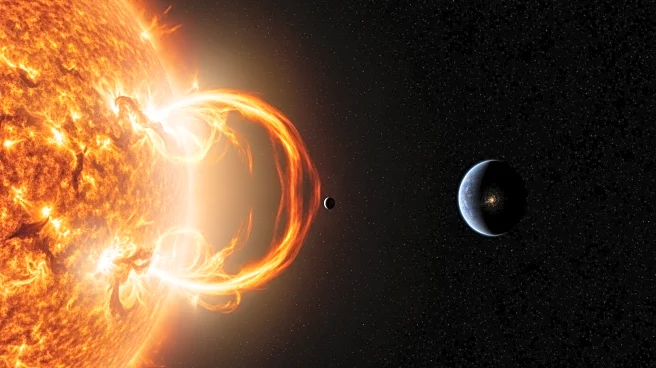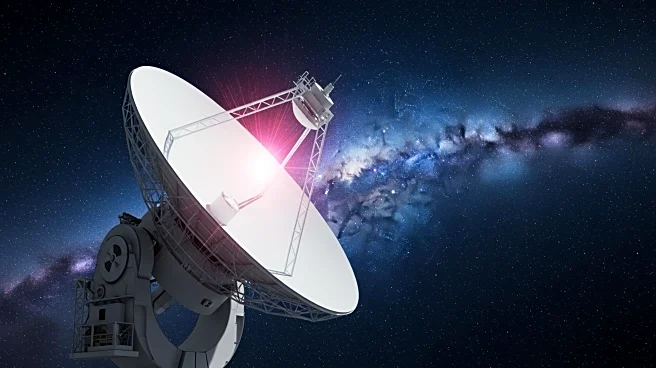What's Happening?
A powerful coronal mass ejection (CME) has been detected from a nearby M dwarf star, StKM 1-1262, located 40 light-years from Earth. This CME was strong enough to potentially strip away the atmosphere
of any Earth-like planets in close proximity. The discovery, published in Nature, marks the first confirmed detection of a CME from a star other than the sun, providing crucial insights into stellar activity and its implications for habitability.
Why It's Important?
The detection of a CME from an M dwarf star is significant for the search for habitable planets. M dwarfs are common targets for life searches due to their abundance and the ease of detecting planets around them. However, their high activity levels and frequent CMEs pose challenges for the stability of planetary atmospheres. Understanding the frequency and intensity of such stellar eruptions is essential for assessing the habitability of planets in these systems.
What's Next?
Further research is needed to determine how often CMEs occur on M dwarfs and their impact on planetary atmospheres. The upcoming Square Kilometer Array telescope is expected to detect more extrasolar CMEs, allowing scientists to better understand the conditions that affect habitability. This research will inform the search for Earth-like planets and the criteria used to assess their potential for supporting life.
Beyond the Headlines
The study highlights the need to consider stellar activity when evaluating the habitability of exoplanets. It also underscores the importance of advanced observational techniques and international collaboration in expanding our understanding of the universe. The findings may lead to a reevaluation of the criteria used to identify potentially habitable planets.












